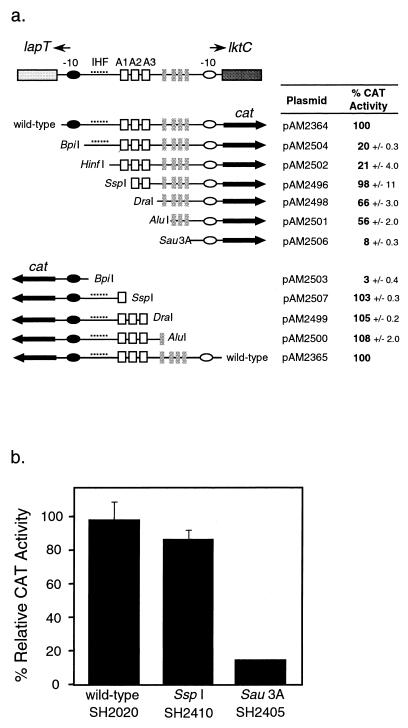FIG. 5.
(a) CAT activities of fusion plasmids with promoter fragments deleted. The diagram shows the lapT/lktC promoter region with particular sequence elements marked. Symbols: closed and open ovals, −10 region; dotted line, near-consensus IHF binding site; open squares, direct repeats A1, A2, and A3; closed rectangles, adenine tracts. By using the restriction enzyme listed next to the fragment, sequential deletions were made in the promoter to remove the elements indicated and then the promoter was ligated to the promoterless cat gene. The CAT activity reported is relative to that of the full-length promoter (wild type) in either the Plkt or the PlapT orientation, as indicated. CAT activity is the average of duplicate samples ± 1 standard deviation. Strains containing each plasmid were grown under identical conditions in BHI at 37°C for 18 h. (b) CAT activity of chromosomal operon fusions. Operon fusions equivalent to plasmids pAM2496 and pAM2506 were recombined onto the M. haemolytica chromosome to create strains SH2410 and SH2405, respectively. CAT activities were determined for cultures grown in BHI at 37°C for 18 h. Results are presented as percentages of the CAT activity of SH2020, which was set at 100%. Results are the averages of duplicate samples, and error bars show 1 standard deviation.

